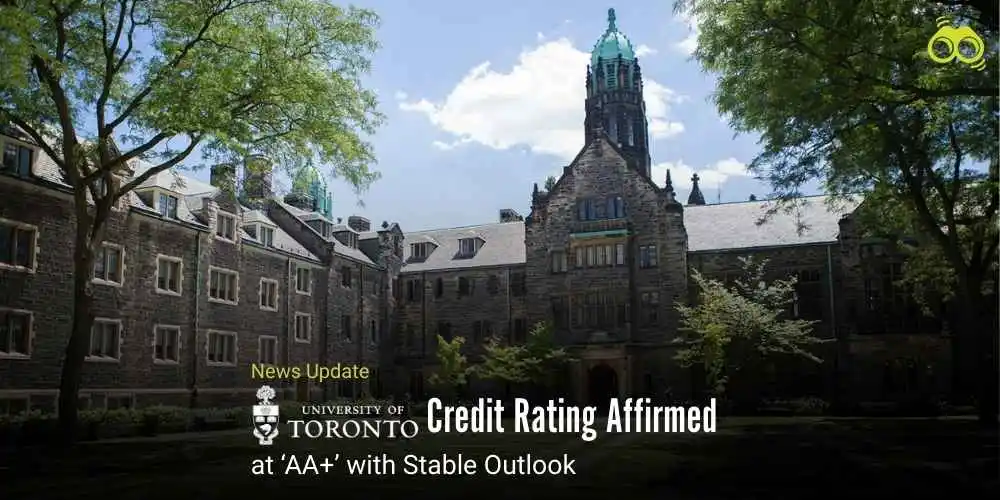College Education Expands in EU Capitals, Rural Regions Lag Behind
Eurostat Data Highlights Mixed Outcomes in EU Higher Education Access
Although Europe continues to invest in workforce development and education, the emphasis has increasingly been put on the proportion of tertiary-educated young adults. As the 2030 target approaches, the European Union is monitoring its regions to ensure that ever-greater numbers of young individuals have access to higher education. Latest figures from Eurostat provide a comprehensive picture of how much EU countries have progressed--and, at the same time, how much they still have to progress. The picture here is one of encouraging gains yet lingering disparities, making a case for strong tertiary schools and an equitable education policy across the continent.
Access to tertiary education is a priority across the European Union. As reported in the latest education news by Eurostat, in 2024, 44.2% of young people aged 25 to 34 hold a tertiary educational qualification. This percentage is just slightly below the EU-wide objective of 45%, which is to be achieved by 2030. The objective demonstrates the commitment of the EU towards increasing higher education and enhancing the contribution of the tertiary sector in equipping young people for the future. The statistics comprise 242 regions under the NUTS 2 statistical regime. Of them, 84 of the regions have already surpassed or reached the 45% threshold. These are usually with robust college education systems and are renowned for their emphasis on research, innovation, and technical training. Numerous leading performing regions are capital cities or economic centres of highly developed education as well as higher education systems.
At the top of the scale, 25 regions claimed that more than 57.5% of young adults had achieved tertiary education. These include the capital regions of Belgium, Denmark, Ireland, Spain, France, Lithuania, Hungary, the Netherlands, Poland, Slovakia, and Sweden. These regions have access to high-quality universities and strong connections with industries like aerospace, life sciences, electronics, and advanced manufacturing. Apart from capital regions, a number of other areas performed well. Northern Spain produced six areas with good performance based on automotive and manufacturing specialisations. The remaining regions of Ireland also did well due to expansion in pharmaceuticals and technology. Utrecht and Groningen from the Netherlands were noted for their emphasis on green technologies and high-tech industries. Cyprus, Luxembourg, and Prov. Brabant Wallon in Belgium also performed among the best, with industries reliant upon knowledge contributing significantly.
Nevertheless, not all the regions are moving at the same rate. On the lower side of the distribution, 24 regions indicated that less than 26.5% of young adults had attained a tertiary education level. These regions tend to be rural, distant, or financially constrained, with limited opportunities for bachelor's degrees in education or further study. In most instances, vocational training is more prominent, with individuals entering the workforce after apprenticeship or technical schooling instead of pursuing tertiary education. These performing poorly were primarily situated in the eastern and southern regions of the EU. Romania alone had seven of the eight lowest-performing regions, the only exception being the capital district of Bucureşti-Ilfov. Hungary, too, was in the same vein, with six out of eight districts below the threshold, but not Budapest and Pest. Italy added four districts, including Sicily and Sardinia islands. Czechia contributed two districts, namely Severozápad and Střední Čechy, and France added Corse and Guyane. The other low-performing districts were Sterea Elláda from Greece, Panonska Hrvatska from Croatia, and the Azores from Portugal.
These results prompt significant inquiry into how EU youth schooling compares internationally and if more students are opting for college schooling or vocational training. Although vocational education is valued within the EU system, it is not always categorised as the same level of tertiary education, depending on the education level and the structure of the program. Based on the ISCED system, tertiary schooling comprises levels 5 to 8, including short-cycle programs, bachelor's degrees, master's degrees, and doctoral studies. The benefits of tertiary education for young people in Europe remain present. Areas with higher tertiary attainment record improved employability, increased incomes, and knowledge-based economies. Meeting its 2030 goals, policymakers in the EU will have to closely consider ways of enhancing access to tertiary education and education in disadvantaged areas, alongside an appreciation of technical education and vocational pathways.
This report further adds to the mounting body of literature related to education and balanced development within the EU. If appropriately directed investment continues, and sufficient and effective supportive action is taken, more regions may be able to gradually narrow the divide and offer young adults a wider set of opportunities for academic and professional development.
Editor’s Note:
This report offers more than just numbers; it reflects the uneven reality of educational access across the European Union. While it is encouraging to see that many regions have already met or exceeded the EU’s 2030 target for tertiary education, the disparities between urban centres and rural or economically limited areas remain stark. These are not statistical gaps; these are lost opportunities for tens of thousands of young people who should have an equal chance to be helped by higher education. There is no mistaking the EU's commitment to increasing the level of tertiary education, and rightly so. An early foundation in college study or technical training gives young adults the skills to perform for today's industries, from aerospace and life sciences to green tech and advanced manufacturing. Countries that invest in tertiary systems and back education qualification paths are reaping the benefits in jobs, innovation, and economic resilience. Yet the information also recalls that advancement is uneven. In some areas of eastern and southern Europe, vocational training still prevails, often out of necessity rather than preference. While vocational paths are worthy and ought to be honoured, they should not become exclusive because of a lack of access to tertiary education. A harmonious education policy should acknowledge the importance of both routes and enable young people to be able to choose their future and not be determined by geography or situation.
Skoobuzz strongly believes that this is the time of action; if the EU is to establish a future around knowledge and opportunity, then all regions need to be equipped to thrive. Tertiary education cannot be an exclusive privilege of a select few; it should be a right that is accessible to the many.
FAQs
1. What percentage of EU youth have completed tertiary education?
As of 2024, 44.2% of young people aged 25 to 34 across the European Union had attained a tertiary education qualification. This figure is just below the EU-wide target of 45%, which is set for achievement by 2030. The data reflects steady progress, though regional differences remain significant.
2. What is tertiary education in the EU context?
In the EU, tertiary education refers to study programmes classified under ISCED levels 5 to 8. These include short-cycle courses, bachelor’s degrees, master’s degrees, and doctoral programmes. Tertiary institutions such as universities and specialised colleges offer these qualifications, which are considered essential for advanced knowledge and professional development.
3. How does vocational education compare to tertiary education in Europe?
Vocational education plays a vital role in many EU regions, especially in rural or economically limited areas. While some vocational programmes are classified as tertiary (particularly at ISCED level 5), many fall below this level and are not counted in tertiary attainment statistics. Vocational routes often lead to skilled employment through apprenticeships or technical training, but they may not offer the same academic depth or progression opportunities as higher education pathways.
4. Which EU countries have the highest tertiary education rates?
Several EU countries have regions that exceed the 57.5% mark for tertiary attainment among young adults. These include the capital regions of Belgium, Denmark, Ireland, Spain, France, Lithuania, Hungary, the Netherlands, Poland, Slovakia, and Sweden. Other high-performing areas include northern Spain, the remaining regions of Ireland, Utrecht and Groningen in the Netherlands, Cyprus, Luxembourg, and Prov. Brabant Wallon in Belgium. These regions are often linked to strong university systems and innovation-driven industries.
5. Why is tertiary education important for EU youth?
Tertiary education offers young people access to better job prospects, higher income levels, and greater career flexibility. It also supports regional development by fostering innovation, research, and skilled workforces. For the EU, increasing tertiary attainment is a strategic priority, helping to build knowledge-based economies and ensure that young people are equipped to meet future challenges.














0 Comments (Please Login To Continue)